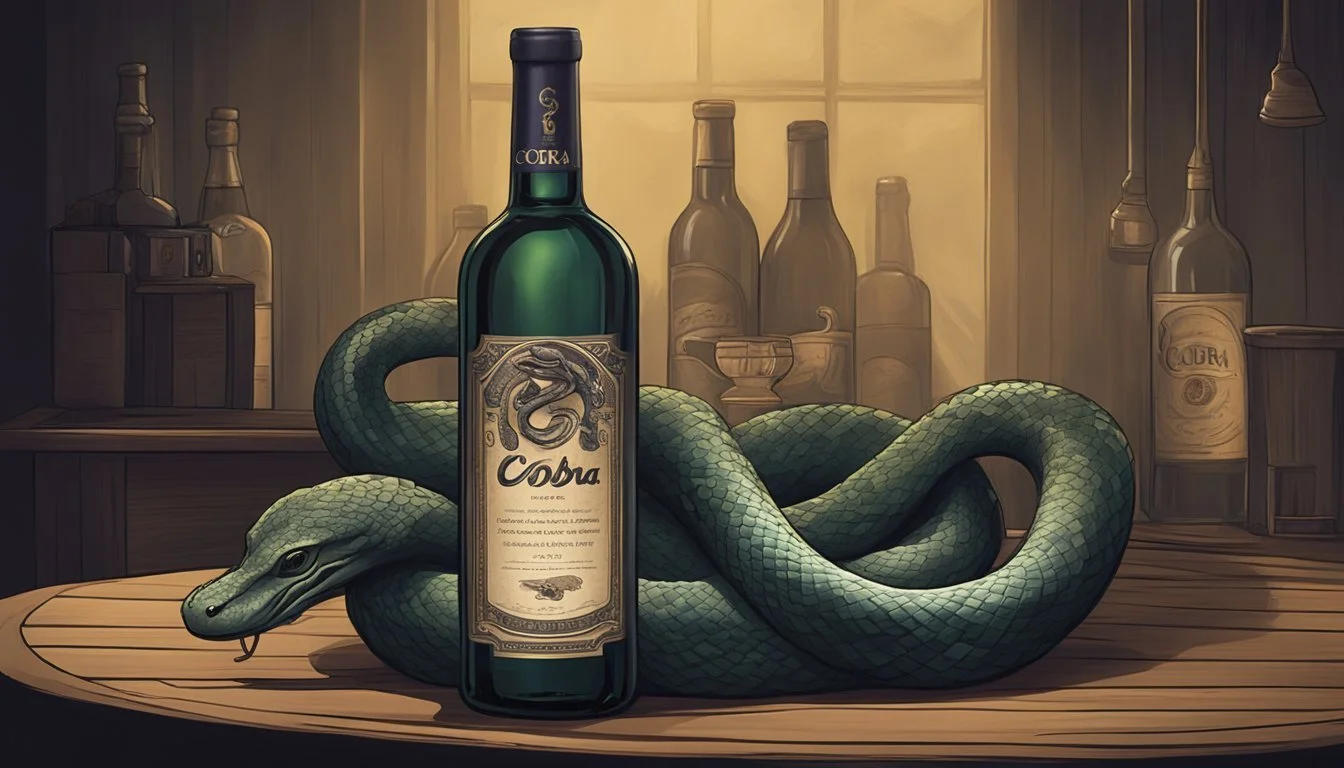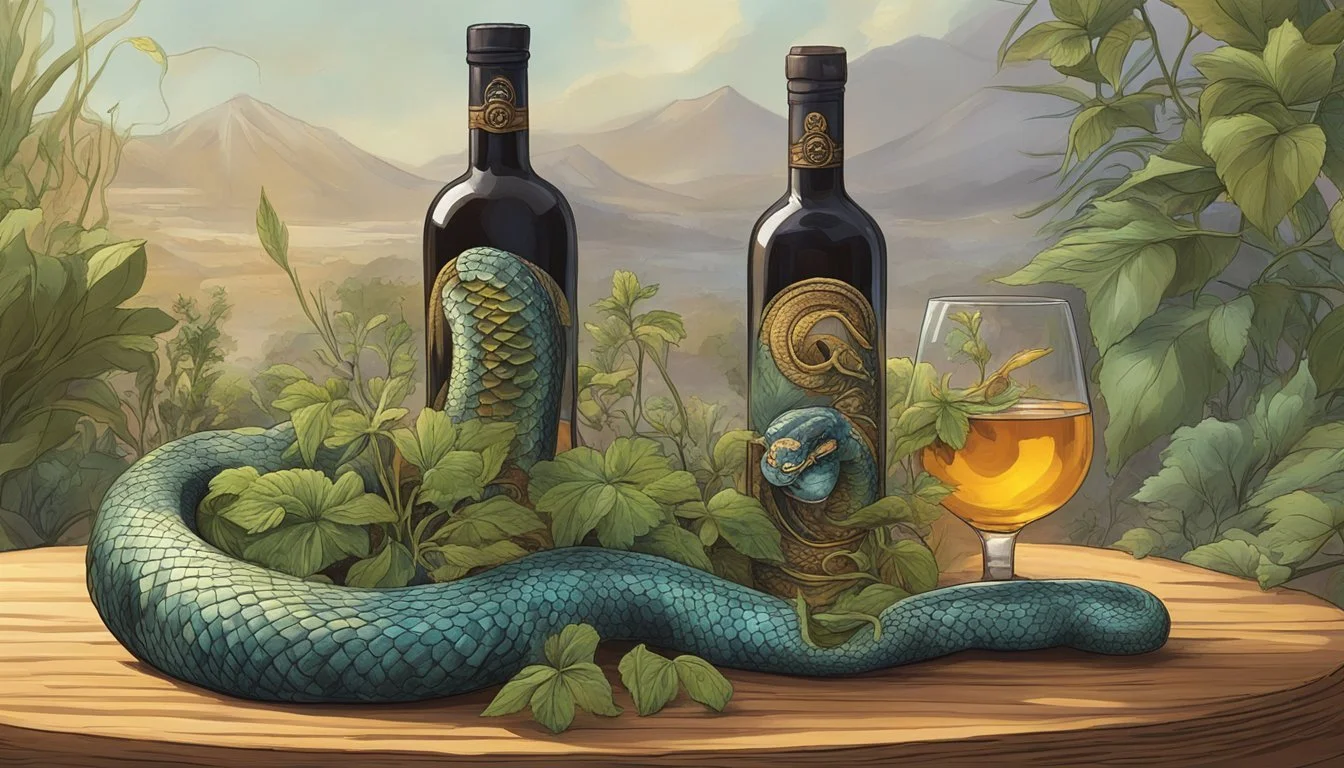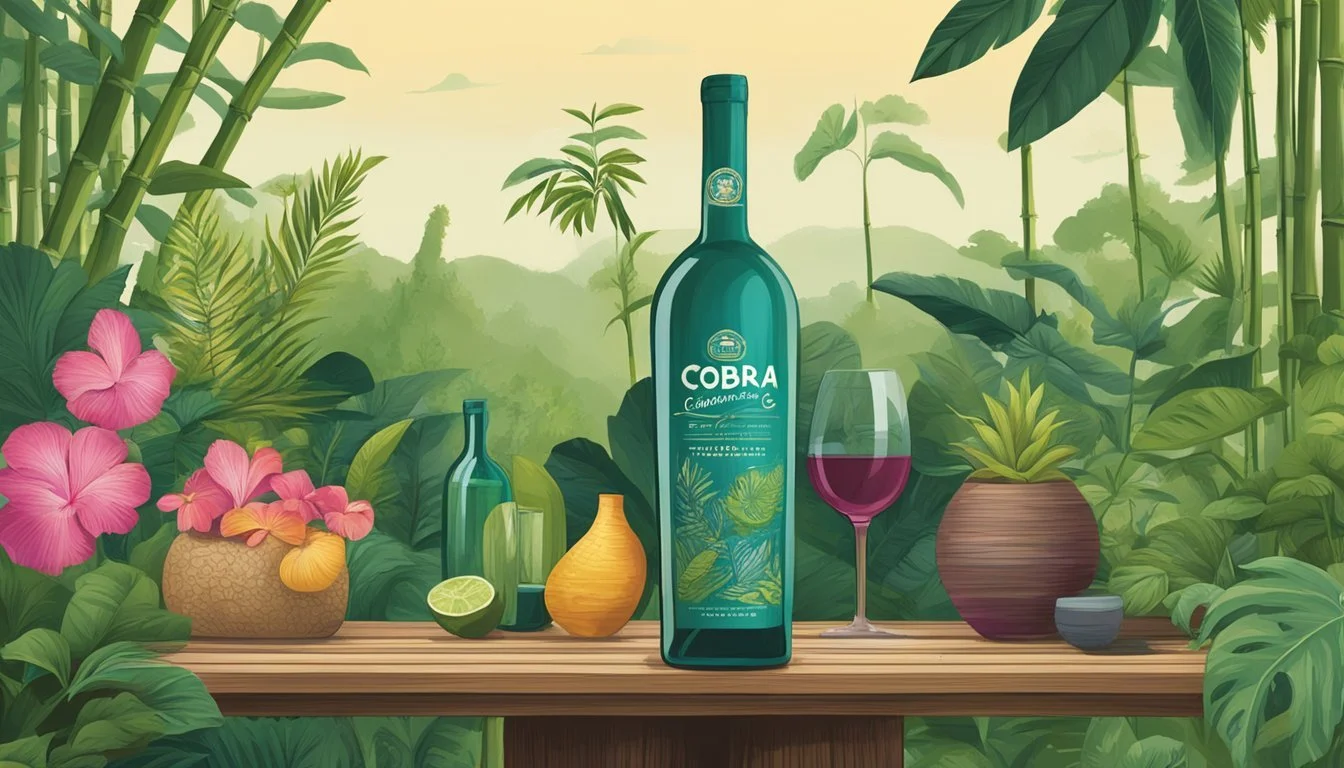Cobra Wine
Unveiling the Mystique of Vietnam's Serpent-Infused Elixir
Cobra wine is an intriguing Vietnamese tonic that has captivated the curiosity of locals and travelers alike. In essence, it is a traditional alcoholic beverage that involves the steeping of a whole snake, often a cobra, in rice wine or grain alcohol. This practice, with deep roots in Vietnamese culture, is believed to have therapeutic properties, extending from improving health to enhancing virility.
The production of Vietnamese snake wine dates back centuries, originally recorded during the Western Zhou dynasty around 1040-770 BC in what is now China. It later permeated into Vietnamese traditions where it has been maintained as a symbol of bravery and a remedy against various ailments. The drink's presence in Vietnam ranges from street markets to bars and is often a sought-after souvenir by tourists, thanks to its reputation and the experience it offers.
Despite its controversial nature, primarily due to animal welfare concerns, cobra wine continues to be a significant aspect of Vietnamese culture. It is found in differing qualities and prices, and while it may not be universally adopted, it still plays a role in showcasing the country's unique traditions to an international audience.
History and Origin
Cobra wine's rich history is deeply interwoven with traditional Southeast Asian and Chinese medicinal practices. Not only has it been a cultural symbol, but it also reflects the evolution of regional tonic-making.
Ancient Practices
In the history of traditional medicines, cobra wine appears as a concoction dating back to the Western Zhou dynasty (c. 1040-770 BC) in China. The infusion of snakes into alcohol is noted in ancient texts, suggesting a long-standing belief in the healing powers of such elixirs.
Evolution in Vietnam
Vietnam has embraced snake wine, including cobra wine, tailoring this ancient tradition to its own cultural palate. Vietnamese variants often feature local snakes and adhere to historical brewing methods. This tonic has become synonymous with Vietnamese culture, especially in cities like Ho Chi Minh City, where it commands significant attention from both locals and tourists.
Influence of Chinese Medicine
The usage of snake wine in Vietnamese culture has been influenced heavily by Traditional Chinese Medicine. Texts such as the "Shen Nong Ben Cao Jing" and later the "Bencao Gangmu" by Li Shizhen, document the medicinal properties attributed to snakes, which have shaped the production and use of snake wine.
Current Status
While snake wine remains a popular tonic in Vietnam and some other parts of Southeast Asia, concerns over legality and conservation have arisen. Snake wine production has been subject to scrutiny, and in some places like Hong Kong and Taiwan, the sale of such wines has been declared illegal as of 2013 due to wildlife protection laws.
Cultural Significance
For centuries, snake wine has been more than just a beverage in Southeast Asia; it's an emblem of masculinity and vitality. Embedded deeply in Vietnamese and Chinese traditions, its importance goes beyond its purported health benefits, and it serves as a distinctive feature of regional cultural heritage.
Types of Cobra Wine
Cobra wine is a traditional Vietnamese tonic, viewed by some as an essential alcoholic beverage made by infusing the essence of venomous snakes into ethanol, often rice wine. It is sometimes believed to impart strength and health benefits, though such claims are not scientifically proven.
Snake Species Used
In Vietnam, the most common species of snakes used in cobra wine include:
Cobra: Specifically, the monocled cobra and the Indo-Chinese spitting cobra.
Krait: The banded krait and the many-banded krait are also used.
Viper: Occasionally, the inclusion of vipers is seen in these infusions.
Their inclusion is controversial, as some of these species are considered endangered.
Additional Ingredients
To enhance the flavor profile and the supposed medicinal value of cobra wine, other ingredients are often added such as:
Herbs: Ginseng and other traditional medicinal herbs.
Geckos: Believed to complement the snake's essence.
Scorpions: Sometimes included for additional alleged health benefits.
Regional Variants
Regionally, the practice of creating cobra wine extends beyond Vietnam to neighboring countries like Laos, Thailand, and Cambodia, each adding local twists:
Laos: It is known for including more herbal mixtures.
Thailand and Cambodia: The wine may have a stronger ethanol base and include more diverse snake species.
The composition of cobra wine might slightly vary in these countries, reflecting local tastes and available ingredients.
Preparation and Consumption
Cobra wine, a traditional Vietnamese tonic, is a complex beverage that involves intricate preparation and possesses distinctive consumption practices. This section delves into the brewing methods, safety protocols during production, the unique tasting experience, and the modern approaches to commercial production.
Traditional Brewing Methods
The process of creating traditional cobra wine begins with selecting a live venomous snake, often a cobra, which is believed to possess health-giving properties. It is placed into a container of rice wine or grain alcohol, which may have been previously infused with fermented sugar cane juice to enhance the flavor profile. Historically, producers let the snake steep for several months to allow the essence to infuse the alcohol fully.
Snake Handling and Safety
Handling live snakes, especially venomous ones, requires significant expertise. During the preparation of cobra wine, professionals exercise extreme caution to avoid snakebites, which can be fatal. Additionally, they adhere to stringent safety measures to ensure that the snake's venom, although neutralized by the alcohol, does not pose risks during the production.
Serving and Tasting Notes
Once properly aged, cobra wine is known for its distinctive, earthy flavor with what some describe as a protein finish, attributed to the snake essence. When serving, enthusiasts may also note a unique aroma that complements the taste. This beverage is typically sipped in small quantities, often as a health tonic or a daring culinary experience.
Modern Commercial Production
The art of commercially producing cobra wine has evolved, implementing measures to standardize safety and quality. Some distilleries now use distilled liquor as the base instead of traditional rice wine, appealing to a broader market. Commercial producers often prepare cobra wine in bulk while still aiming to respect the authenticity of the homemade elixirs.
Medicinal Claims
Cobra wine, a tonic believed to possess healing properties, is steeped in tradition and contemporary beliefs regarding its efficacy. The use of snake essence in this Vietnamese beverage is often linked to the treatment of various health conditions.
Historical Remedies
Traditional Chinese Medicine (TCM) has often utilized animal parts, with snakes being one of the prevalent choices for concocting remedies. Specifically, the use of snake bile and blood was believed to treat rheumatism and improve blood circulation. Healers in ancient times relied on the medicinal properties of snake venom, considering it a potent element that could, paradoxically, remedy conditions caused by toxins.
Contemporary Beliefs
Today, many people in Southeast Asia still hold the belief that cobra wine can serve as an aphrodisiac, enhance health, prevent hair loss, and manage arthritis. It is widely claimed that the inclusion of venomous reptile species, such as cobras, into the wine imparts these benefits, although the venom is inactivated by the alcohol. The beverage continues to enjoy popularity, and it is often suggested by some traditional healers as a natural treatment option.
Scientific Perspectives
From a scientific viewpoint, the claimed benefits of cobra wine remain largely unsupported by empirical evidence. While snake venom contains proteins and enzymes that may affect bodily processes, once denatured by alcohol, its efficacy as a medicine is dubious. Studies on the medicinal properties of snakes in Oriental medicine often struggle to withstand rigorous scientific methodologies. Moreover, using endangered species for such practices raises ethical and conservation concerns.
Ethical and Environmental Concerns
The production of Cobra Wine, a Vietnamese tonic, raises significant ethical and environmental concerns, particularly regarding the protection of endangered species, conservation laws, and animal welfare.
Protection of Endangered Species
In Southeast Asia, the trade of cobra wine involves the use of snakes, including some venomous and potentially endangered species. Cobras, often used in the wine, may be at risk due to overexploitation driven by demand for snake wine. The inclusion of endangered species in snake wine is both unethical and can impact biodiversity negatively.
Species at risk: Certain cobra species utilized for snake wine are listed under the Convention on International Trade in Endangered Species (CITES), which compels member countries to regulate their trade.
Southeast Asia's biodiversity: This region has a high level of endemic species, meaning the overexploitation of snake populations for wine production can lead to irreversible ecological consequences.
Conservation and Legislation
Vietnam, where cobra wine is popular, has joined international agreements aimed at protecting wildlife. Despite these efforts, the regulation often falls short due to unregulated and illegal wildlife trade.
Laws and enforcement: Vietnam's participation in CITES suggests a commitment to conserving its natural resources. However, the enforcement of relevant legislation is inconsistent, sometimes allowing the illegal trade of protected species to persist.
Impact on conservation efforts: The production of snake wine can undermine conservation efforts as it may incentivize the illegal harvest of venomous snakes from the wild.
Animal Welfare Issues
The process of making cobra wine often involves inhumane treatment of live snakes. This raises serious concerns about animal welfare, as the practices go largely unregulated.
Use of live snake: The traditional method of making cobra wine may involve placing a live snake inside alcohol, which could cause prolonged suffering before its eventual death.
Ethical implications: The lack of humane treatment standards in the wine production process poses ethical dilemmas, as it prioritizes consumer demand over the welfare of the snakes involved.
By addressing these issues, stakeholders can work towards sustainable practices that respect both wildlife conservation and animal welfare.
Tips for Tourists
When traveling to Vietnam, tourists often come across an intriguing tonic known as Vietnamese snake wine. This article offers guidance to ensure that one's experience with this unique aspect of Vietnamese culture is both safe and legal.
Identifying Authenticity
Tourists should be aware that genuine Vietnamese snake wine typically contains a preserved snake, often a cobra, which can be identified by its hood. It may also include other creatures such as scorpions, adding to its exotic appeal. To confirm the wine's authenticity, those interested should seek out establishments or vendors known for their expertise in traditional Vietnamese liquors.
Look for the hood of the cobra in the bottle to ensure it's snake wine.
Visit reputable vendors recommended by locals or travel guides.
Legal Considerations
The legality of snake wine varies by country. It is vital for tourists to verify the laws regarding the possession and transport of snake wine, as it can be considered illegal in some places, including Hong Kong. Travelers must ensure they do not inadvertently break the law by purchasing or transporting this souvenir.
Check the local laws before purchase: Legal in Vietnam, potentially illegal abroad.
Be cautious with international travel: illegal to carry into certain countries, such as Hong Kong.
Health and Safety Precautions
The consumption of snake wine comes with potential health risks, particularly due to the venom and the danger of consuming improperly prepared wine, which could be fatal. Tourists should only consume snake wine from reliable sources where proper sanitation methods are practiced. Consuming snake wine for those unaccustomed to it should be done cautiously.
Ensure the wine has been prepared with proper sanitization to neutralize venom risks.
Consume in moderation, and recognize potential health dangers, especially with unknown allergies.
Conclusion
In Vietnamese culture, Cobra Wine is not only a beverage but a statement of ancient practices and beliefs. This tonic, infused with the essence of snakes, specifically cobras, holds a significant place in the hearts of many local connoisseurs. As a product of tradition, it's often associated with masculinity and vitality. It underscores the importance of respecting cultural heritages and understanding the depth of traditional remedies.
When contemplating ethical considerations, consumers and producers alike should be aware of the conservation status of the species used. The impact on wildlife populations is a consideration that must be balanced with cultural practices. It’s essential for producers to source their key ingredient responsibly to ensure sustainability.
From a broader cultural standpoint, the production and consumption of Cobra Wine should be approached with sensitivity and an attempt to understand its role in Vietnamese culture. This is not simply a drink but a cultural artifact with deep roots and significant meaning to local people.
As an outsider, one might view Cobra Wine with curiosity or skepticism. However, to partake is to engage directly with a history that predates modern borders and contemporary ethics. It’s crucial to recognize the importance of this tradition, while also considering the pressing need for ethical and sustainable practices.
In conclusion, Cobra Wine presents an intriguing convergence of history, traditional medicine, and cultural identity, balanced against the modern-day imperatives of conservation and ethics.




